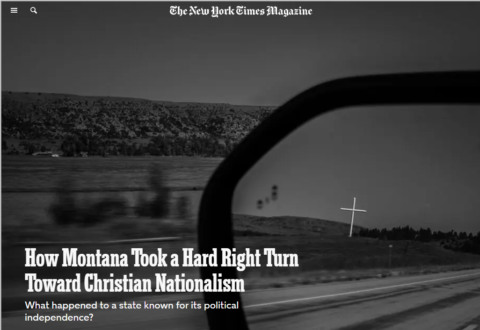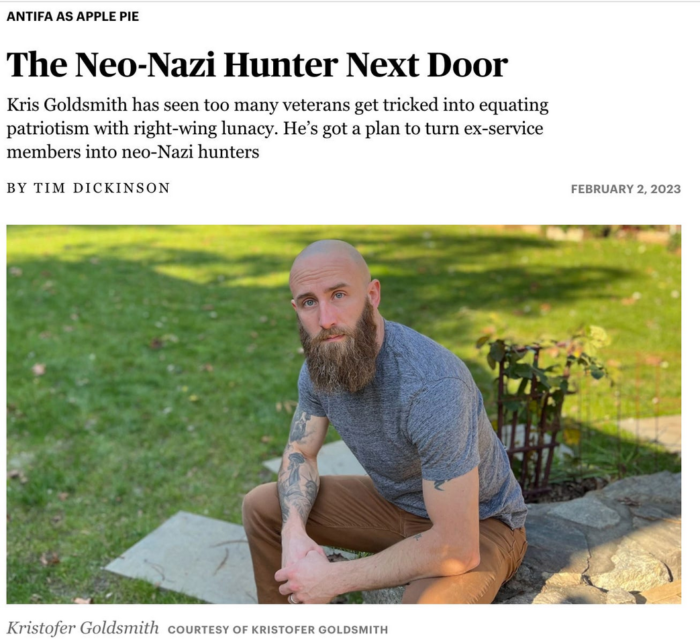Paul Sellers
Published 21 Oct 2022We are often taught to plane in one direction or the other, planing along the grain, but some grain is better planed across the long axis to counter reverse grain caused by the roots of knots in the wood. This goes against the grain with many woodworkers, and yet it can be a perfect solution to get a really good surface.
I am not saying it works every time but more often than you might think; it puts you in the driving seat when wood seems to defy conventional means of planing.
(more…)
February 8, 2023
Hand Planing Awkward Grain | Paul Sellers
QotD: How do the “great works of art” become “great”?
In 1993, a psychologist, James Cutting, visited the Musée d’Orsay in Paris to see Renoir’s picture of Parisians at play, “Bal du Moulin de la Galette”, considered one of the greatest works of Impressionism. Instead, he found himself magnetically drawn to a painting in the next room: an enchanting, mysterious view of snow on Parisian rooftops. He had never seen it before, nor heard of its creator, Gustave Caillebotte.
That was what got him thinking.
Have you ever fallen for a novel and been amazed not to find it on lists of great books? Or walked around a sculpture renowned as a classic, struggling to see what the fuss is about? If so, you’ve probably pondered the question Cutting asked himself that day: how does a work of art come to be considered great?
The intuitive answer is that some works of art are just great: of intrinsically superior quality. The paintings that win prime spots in galleries, get taught in classes and reproduced in books are the ones that have proved their artistic value over time. If you can’t see they’re superior, that’s your problem. It’s an intimidatingly neat explanation. But some social scientists have been asking awkward questions of it, raising the possibility that artistic canons are little more than fossilised historical accidents.
Cutting, a professor at Cornell University, wondered if a psychological mechanism known as the “mere-exposure effect” played a role in deciding which paintings rise to the top of the cultural league. In a seminal 1968 experiment, people were shown a series of abstract shapes in rapid succession. Some shapes were repeated, but because they came and went so fast, the subjects didn’t notice. When asked which of these random shapes they found most pleasing, they chose ones that, unbeknown to them, had come around more than once. Even unconscious familiarity bred affection.
Back at Cornell, Cutting designed an experiment to test his hunch. Over a lecture course he regularly showed undergraduates works of Impressionism for two seconds at a time. Some of the paintings were canonical, included in art-history books. Others were lesser known but of comparable quality. These were exposed four times as often. Afterwards, the students preferred them to the canonical works, while a control group of students liked the canonical ones best. Cutting’s students had grown to like those paintings more simply because they had seen them more.
Cutting believes his experiment offers a clue as to how canons are formed. He points out that the most reproduced works of Impressionism today tend to have been bought by five or six wealthy and influential collectors in the late 19th century. The preferences of these men bestowed prestige on certain works, which made the works more likely to be hung in galleries and printed in anthologies. The kudos cascaded down the years, gaining momentum from mere exposure as it did so. The more people were exposed to, say, “Bal du Moulin de la Galette”, the more they liked it, and the more they liked it, the more it appeared in books, on posters and in big exhibitions. Meanwhile, academics and critics created sophisticated justifications for its pre-eminence. After all, it’s not just the masses who tend to rate what they see more often more highly. As contemporary artists like Warhol and Damien Hirst have grasped, critical acclaim is deeply entwined with publicity. “Scholars,” Cutting argues, “are no different from the public in the effects of mere exposure.”
Ian Leslie, “The Mona Lisa Effect”, The Ruffian, 2022-10-29 (originally published in Intelligent Life in 2014.
February 7, 2023
Making Canada’s gun laws more illogical, but appealing to urban Liberal voters, regardless of the political cost elsewhere
In The Line, Matt Gurney recounts the federal government’s political gyrations over their attempt to ban vast numbers of rifles and shotguns owned by law-abiding Canadians:
Classifying guns is complicated. There are a lot of ways to do it. You can do it by the “action”: is it a pump action? A lever action? Is it semi-automatic, or even fully automatic? You can do it by the length of the total firearm, or the length of just the barrel. You can do it by the caliber of the ammunition. You can do it by the type of magazine the firearm uses, and what its capacity is (the magazine is the compartment, which can be removable or integrated with the firearm, that holds the ammunition). You can try and be targeted with your definitions, or you can just go across the board and say “All rifles are allowed but all handguns are banned.” The point here isn’t to argue what the policy should be, but simply to note that whatever your policy is, you have to be able to define it in a way that makes sense.
Canada’s current gun laws date, more or less, to the 1990s. They’ve been changed a bunch of times since, for better or worse, but that’s when the current overall system of firearms legislation began. We came up with three broad categories of firearm then. There are “non-restricted” firearms, which you must be licensed to own, and mostly mean very typical rifles and shotguns, of which millions of licensed Canadians own many millions. There’s also the “restricted” category, which basically meant handguns — either semi-automatic pistols or revolvers. These require extra licensing, more background checks and training, and are subject to much stricter conditions for storage and use. And then there’s the very rare “prohibited” firearms, which are mostly either very compact handguns, or fully automatic weapons, including machine guns, which were owned by Canadians already when the new laws came in almost 30 years ago. These owners were given a special and highly limited rights to retain the firearms they already owned, but not to transfer them to others, except to someone else with a rare prohibited licence, or to a direct descendent. (That last bit was to cover family heirlooms.)
None of the above is as simple as I’ve just described it. Weird absurdities have been part of the system from the outset. The reason for these absurdities was always political. Back in the 1990s, the Liberals, under then-prime minister Jean Chrétien, realized that the categories above would result in certain kinds of rifle (including the AR-15) being classified as non-restricted, and subject to the least onerous controls. Unhappy with the optics of that, and other similar examples, they wrote in exceptions to the way some firearms are categorized. A firearm would be categorized by its technical specifications unless the government specifically ordered it classified as something else, is probably the easiest way to summarize a complicated policy.
Using the AR-15 again, according to the “evergreen” technical definitions we settled on in the 1990s, that’s a non-restricted gun. To avoid awkward political questions, the then-Liberals deemed it a “restricted” firearm, and therefore subject to tighter controls.
There were other similar examples, and they resulted, as noted above, in a lot of absurdities, with very similar guns categorized differently, but since only a relatively small number of firearms were so specially categorized, the system more or less functioned reasonably well for decades. The absurdities were limited enough to be broadly known and adapted to, and the overall system made enough sense to function coherently enough to do a reasonably good job regulating the sale, ownership and use of firearms in Canada. And very successfully: gun crime by licensed gun owners in Canada is, as is well known, quite rare. The system basically worked, and was working.
[…]
But hey, then politics happened. The sunny ways days ended. Liberal fortunes waned. Scandals and baggage and awkward photos of the PM in his younger days accumulated. And suddenly, the Liberals were talking a lot about banning assault rifles. They talked about it even more after the 2019 election reduced them to a parliamentary minority, leaving them dependent on a cluster of urban and suburban ridings in Quebec and Greater Toronto where support for just about any half-coherent sounding gun-control measure is typically high. The Liberals didn’t do much of anything — mostly just talk, as is their style. Then, in early 2020, there was the horrific massacre in Nova Scotia, and within days, the Liberals announced they were banning 1,500 models of assault rifle. (It was actually far fewer — closer to 20 — but the Liberals counted each different version and brand as an entirely different rifle to get to a more-impressive sounding figure. Those fierce opponents of disinformation at work again!)
Anything even close to meeting a broadly shared definition of “assault rifle” was already banned in Canada, of course — it had been classified “prohibited” back in the 1990s. There’s no universally agreed upon definition of an “assault rifle”, but those who know guns could agree in broad terms what it would mean — and in Canada, they were all banned, and had been for decades. So the Liberals, keen to have their lookin’-tough-and-bold moment, started talking about “assault-style” rifles.
Appending “-style” to anything is a gigantic red flag for bullshit, as I’ve noted here before. That somehow failed to deter them, alas, setting the stage for their current woes.
Disney – An Empire In Collapse
The Critical Drinker
Published 6 Feb 2023Disney isn’t looking too healthy these days, with massive financial losses, collapsing stock prices and internal power struggles threatening to tear the House of Mouse apart at the seams. How did this happen? Let’s find out.
(more…)
Big Sky fascism, according to the New York Times
In The Free Press, Walter Kirn expresses dismay to discover that he’s been living in a “quasi-fascist” state for 30 years and didn’t even notice until the Grey Lady informed him about it recently:
Just a few weeks back, I sat down with my morning coffee, opened up the paper and learned that I now live in a quasi-fascist state. It said so in the paper.
The paper wasn’t a local publication but one from a couple thousand miles away, the New York Times, whose glossy Sunday magazine included a lengthy, illustrated feature with the five-alarm headline How Montana Took a Hard Right Turn Toward Christian Nationalism. To illustrate the state’s alleged swerve toward neo-fascist theocratic rule — a dire development I’d somehow missed — the story included a scary gothic photo, heavily filtered to bring out its dark tones, of a ghostly white cross on a bare hillside reflected in a passing rearview mirror. It also included, of course, a Yellowstone reference and Kevin Costner’s name — right up top, where the search engines would see them.
Since moving to small-town Montana from New York City over 30 years ago, I’d lived through at least a couple of cycles of ominous national coverage of my state. Without going into the details, let me assure you that this article was bunk, as exaggerated as the photo.
But fiction is fact where Montana is concerned, particularly on the country’s coasts, where tales are told about the country’s interior that the country’s interior lacks the clout to counter, much as our guns lack the range to bring down aircraft. Despite our legendary swagger, Montanans are largely helpless against the country’s more powerful forces. The missiles on our prairies aren’t missiles we asked for, just missiles that formidable others wished to plant here. They make us a target, but we don’t control them.
Do I sound defensive? Perhaps I am.
I live in a state with zero big-league sports teams, not a single Fortune 500 corporation, and no national media influence to speak of — unless you count made-up shows about fake ranchers slugging it out in scripted brawls. I’m one of about a million residents, all of whom, no matter their circumstances, are up against the myth-making machines of cities and states of imperial wealth and numbers. And imperial attitudes, dare I say, which emerge in their basic, perennial story about us: those folks from the steppes and mountains are growing restless, including the ones who’ve just moved there to go skiing, who appear to be worse than the ones already living there, who we’ve always found unsettling enough.
When the spy balloon floated across America, the rest of the country got a taste, perhaps, of Montana’s stoic colonial impotence. For days, we could point, but we weren’t allowed to shoot — great-power diplomacy prevented it. Americans may think we’re tough, as Montanans may think they’re tough, but it seems that we’re tough in the way that actors in westerns are: only with the permission of the director, only symbolically. Down went the balloon on Saturday to much applause, but the spectacle was pure cinema by then, like a fistfight on Yellowstone that draws fake blood.
But at least we proud Montanans kept our honor. We spied the lurking villain, we called the sheriff, we warned our neighbors, we did what we could do. I suspect we’ll continue in this role, watchful vigilantes of the skies. There’s trouble afoot – you can feel it everywhere, particularly if you dwell near nuclear missiles, particularly if you live where there’s no cover — and someone has to stand lookout on the hill.
The Soviet Union Adopts an SMG: Degtyarev’s PPD-34/38
Forgotten Weapons
Published 21 Oct 2022The Soviet Union adopted its first submachine gun in 1935 after trials of some 14 different design in 1932/33. The winner of the trials was Vasily Degtyarev, once of the Soviet Union’s most prolific firearms designers. His model 1934 was a simple blowback gun reminiscent of the MP-28,II albeit with different trigger and magazine systems. The PPD34 used a 25-round box magazine, chambered for 7.62x25mm Tokarev. It was put into slow production, with just 3,300 or so produced by the end of 1938. During that time, Degtyarev made a number of small improvements to the gun, smoothing out the teething problems that are always found in new production systems. This improved version was designated the PPD34-38.
During the time, the submachine gun was not considered a priority by the Red Army. The leading generals did not see the value in the class of arms, and actually pulled all the PPDs from service in 1939 and had them put into storage. Only a few months later, the Red Army would be given a grim demonstration of SMG effectiveness when they closed the border into Finland and encountered determined Finnish resistance with kp/31 Suomi SMGs.
Some Suomis were captured by Soviet troops, and were very well liked — for obvious reasons. The inevitable inquiry into why the Red Army did not have such a weapon led to a frantic re-issuing of PPDs and production of as many as possible. At Stalin’s direction, the Suomi drum magazine was copied and adapted to the PPD34-38 as well. This required the addition of a short feed tower to fit the magazine well initially deigned for a standard box magazine. While PPD34-38 production continued, the PPD40 was quickly designed and put into production alongside the older model. Eventually, both were replaced in service by the PPSh-41, which was truly designed for mass industrial production.
(more…)
QotD: The misery of certainty
No one else on this earth, I assure you, is so dogmatically certain of anything as ivory tower types are of everything. What they believe today might be 180 degrees from what they believed yesterday, but they still believe it with a fanatical zeal that would make Torquemada blush. Whatever “it” is, it is the capital-T Truth, and they alone possess it …
So why are they always so fucking miserable?
Let’s stipulate, for instance, that gender really is just a social construction. Even if it’s not, you’re dogmatically certain of this. Crucially, everyone else in your world is equally dogmatically certain, so even if it’s not, it is. Shouldn’t you be much, much, much happier? So you’re really a wingless golden-skinned dragonkin. Cool. Everyone else is 100% on board with this. You should be the happiest wingless golden-skinned dragonkin on earth … but you’re not. You’re miserable, and you do your damnedest to make every single other person you come in contact with miserable, too.
As a wise man once put it, if you run into an asshole in the morning, well, you just ran into an asshole. If you run into nothing but assholes all day, then you’re the asshole.
Same question to atheists. I can understand nonbelievers being tormented by their uncertainty, but an atheist is dogmatically certain there’s no god … so why aren’t y’all happier? Why, exactly, does the kid with cancer make you mad? The universe, you’re sure, is nothing but the random collision of atoms. It sucks for the kid that those atoms collided in that particular way, but why are you mad? More to the point, why are you mad? It’s like getting mad at gravity for that apple bonking you on the head. There’s no cosmic injustice without cosmic justice. I’d expect a zenlike calm, but instead, every time I write something about atheism (which I really don’t very often), I get a whole bunch of sour, bitter, angry atheists dropping in to tell me that I’m the asshole.
Severian, “The Emotion is the Tell”, Rotten Chestnuts, 2020-01-24.
February 6, 2023
Food prices going up? Destroying “excess” production? That’s Canada’s Supply Management system working at peak efficiency!
Jon Miltimore reports on recent comments about some of the weird requirements for quota-holding dairy farmers under the Canadian Supply Management system:
Canadian dairy farmer is speaking out after being forced to dump thousands of liters of milk after exceeding the government’s production quota.
In a video shared on TikTok by Travis Huigen, Ontario dairy farmer Jerry Huigen says he’s heartbroken to dump 30,000 liters of milk amid surging dairy prices.
“Right now we are over our quotum, um, it’s regulated by the government and by the DFO (Dairy Farmers of Ontario)”, says Huigen, as he stands beside a machine spewing fresh milk into a drain. “Look at this milk running away. Cause it’s the end of the month. I dump thirty thousand liters of milk, and it breaks my heart.”
Huigen says people ask him why milk prices are so high.
“This here Canadian milk is seven dollars a liter. When I go for my haircut people say, ‘Wow, seven dollars Jerry, for a little bit of milk'”, he says, as he fills a glass of the milk being dumped and drinks. “I say well, you have to go higher up. Cause we have no say anymore, as a dairy farmer on our own farm. They make us dump it.”
[…]
In the United States, the primary regulations are high-level price-fixing, bans on selling unpasteurized milk (which means farmers have to dump their product if dairy processors don’t buy it), and “price gouging” laws that prevent retailers from increasing prices when demand is low, which incentivizes hoarding.
In Canada, the regulations are even worse.
While the price-fixing scheme for milk in the US is incredibly complicated and leaves much to be desired — there’s an old industry adage that says “only five people in the world know how milk is priced in the US and four of them are dead” — in Canada the price is determined by a single bureaucracy: the Canadian Dairy Commission.
The Ottawa-based commission (technically a “Government of Canada Crown Corporation”), which oversees Canada’s entire dairy system (known as Supply Management), raised prices three times in 2022, citing “the rising cost of production”.
Food price inflation remains a serious issue in Canada, but the problem is particularly acute in regards to dairy products, which has seen their annual inflation rate triple over the past year, to almost 12 percent.
If the farmers were doing this sort of price-fixing themselves, it would be illegal. Instead, because it’s the government doing it, it’s mandatory. You aren’t allowed to produce any of the supply-managed products outside the system, and the government helpfully protects Canadians from being “victimized” by cheaper imports by high tariffs on anything competing with supply managed output.
As with any rigged market, the costs of “protecting” the market are diffused among all Canadian consumers, but the benefits are concentrated in the hands of the quota-holders (and the bureaucrats who oversee the system). My issues with the supply management system are one of the “hobby horses” I’ve ridden many times over my nearly 20 years of blogging.
How We Make Our Videos (and what it costs)
World War Two
Published 5 Feb 2023We’re excited to finally answer all your questions about where Indy lives, how we produce the series, and how many of us there are in the TimeGhost Team!
(more…)
Why Traditional English Cheddar Is Aged In Caves | Regional Eats
Food Insider
Published 9 Oct 2019The earliest record of cheddar anywhere is at Cheddar, in Somerset, in 1170. The land around this village has been at the heart of English cheesemaking since the 15th century. Today, as many Cheddar producers have upscaled and require more land, there is only one traditional cheesemaker left in the village.
(more…)
QotD: US railroad land grants
In 1871, Kentucky Congressman J. Proctor Knott gave a humorous speech on the floor of the House of Representatives ridiculing the idea of giving land grants to western railroads. He focused on Duluth, which at the time had about 3,000 residents, and his basic argument was that U.S. taxpayers in general should not be required to subsidize projects that benefitted only a few.
The speech was widely reprinted by those skeptical of government pork barrel (a term that first became popular about the time Knott gave his speech). Sixteen years later, Northern Pacific, which received what was probably the largest land grant to a private company in American history, reprinted the speech in this brochure.
This might seem strange except that NP annotated the speech with recent facts in bright red letters, such as that Duluth had grown to house 26,000 people by 1886, that more wheat was delivered to Duluth each year than to any other American city, and that it also saw deliveries of millions of board feet of lumber and hundreds of thousands of tons of iron ore each year.
NP didn’t say so in so many words, but its point was clearly that the land grants, contrary to Knott’s predictions, were a good thing for most if not all Americans. However, the brochure also didn’t mention that James J. Hill was proving that a railroad that didn’t receive any land grants or subsidies could provide just as many benefits without going bankrupt, which would leave both investors and taxpayers in the lurch. (The St. Paul & Pacific did receive a small land grant, but Hill paid fair market value for that railroad and land after it went bankrupt, thus Hill didn’t particularly benefit from the subsidy.)
Train Lover (Randal O’Toole), “Debate Over Railroad Land Grants”, Streamliner Memories, 2022-11-01.
February 5, 2023
Leningrad: NO STEP BACK! – Week 232 – February 4, 1944
World War Two
Published 4 Feb 2023The Allies begin a new operation in the Pacific this week: assaulting the Marshall Islands. They also make big attacks from their beachhead in Italy at Anzio, but these are called off after only a few days in the face of heavy enemy resistance. However, in the USSR there are several successes against the Axis, as they are pushed back both in the far north and the far south of the front, and still surrounded near Korsun.
(more…)
“We need to find a couple of big-fish donors who want to see a bunch of vets going out and collecting digital Nazi scalps”
Chris Bray examines the cutting edge of anti-Nazi crusading:
So here’s the most important political story to appear in Rolling Stone since Sabrina Rubin Erdely earned early retirement:
There’s a growing movement of American Nazis, you see, so military veterans are pulling on their boots to fight for their country again, hunting those Nazis and taking them out. But actually reading the story is, pardon me for a moment, a little like hammering a fucking spike into your brain. Every claim self-refutes; paragraph by paragraph, the story tells you X and Not X, side-by-side, with equal authority.
Start with the foundation of the claim. Goldsmith’s work, Rolling Stone explains, “centers on exposing the inner workings and public wrongdoing of neo-fascist groups through deep-dive intelligence reports that can give prosecutors the evidence they need go after the hatemongers in court.” Try to find a definition of “neo-fascist” in the story, though, and you fail. Fascism, it turns out, is being mean. It’s politics for the TikTok era: fascism is haters! Actual fascists thought they believed in the sacredness and centrality of the state, government as the highest form of human expression; the LARPers tracking fascists in 2023 think it means you didn’t contribute to WinBlue last month.
And so Goldsmith says he’s tracking “these people who would literally kill their fellow Americans to install a fascist dictator”, which would be a pretty dire confrontation. Then, making the claim concrete, Goldsmith gets to this description of the Patriot Front, his primary Nazi nemesis:
I have come to understand them as a unique threat against the people of the United States. While they’re a small group — they may have 200, 220 members at any given time — the thing that makes them so dangerous is the cult like atmosphere.
So the headline is a life-and-death struggle between the rising tide of American fascists who are preparing to kill us all and install their Hitler; the story is 200 people — maybe 220! — “at any given time”. Here, by the way, is a leaked Patriot Front training video, so you can see just how terrifyingly dangerous they are:
The only thing the Patriot Front threatens is the retail availability of your favorite product at Dunkin’ Donuts, but let’s go on.
Standing across the battlefield from this terrifying group, the story reveals, Goldsmith & Co. now total a force of “two dozen volunteers”. Then comes this exchange, deep into the Q&A:
Rolling Stone has turned a cosplayers-on-cosplayers circle jerk into the Battle of the Bulge. Compare THE NAZI HUNTER NEXT DOOR to a living room’s worth of unpaid hobbyists who could really turn into something if someone would just, like, give us some money.
Now, the punchline: The NAZI HUNTER is very much having his big media moment, scoring a series of profiles since the start of the year. Here he is being interviewed by the New York Times (where his wife is an editor) in January, for example, under an intro that says he’s hunting “antigovernment” extremists who are fascist. We all remember how the original fascists were passionately anti-government, of course. Hitler, Franco, and Mussolini — big libertarians, all. Hardly wanted to have any government, so people could just hang loose and roll however they chose.
The tediousness of pumping all this sad-sackery into a big national story is exhausting, as is the news media in general. But we need the distraction of Nazis and insurrections, or we’d risk talking about things that are real.












